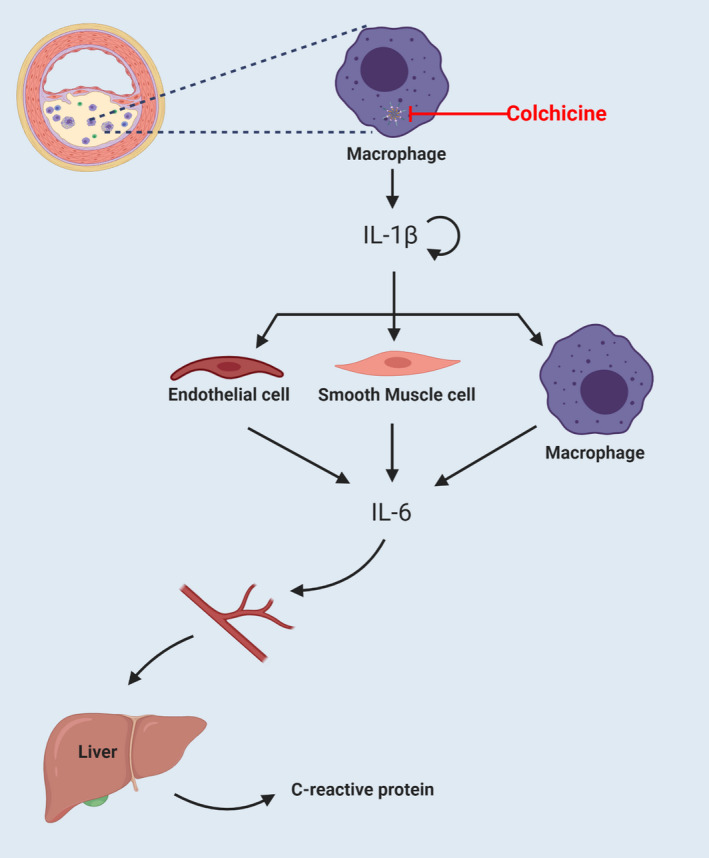FIGURE 2.

NLRP3 inflammasome, IL‐1 β, IL‐6, C‐reactive protein inflammatory response axis. The activation of NLRP3 inflammasomes in macrophages can activate caspase‐1 and release a large amount of IL‐1β, which can induce inflammatory factor storms through self‐activation. In addition, IL‐1β can activate endothelial cells, smooth muscle cells and macrophages to release a number of IL‐6. IL‐6 can circulate through the blood to the liver and induce hepatocytes to produce CRP. The marker of CRP as an indicator of clinical inflammation can be detected in patient blood samples. With CRP ≥2 mg/L, we can consider there to be an inflammatory response in the patient's body. Colchicine can inhibit the activation of NLRP3 inflammasomes, thereby causing the downstream levels of IL‐1β, IL‐6 and CRP to decrease
